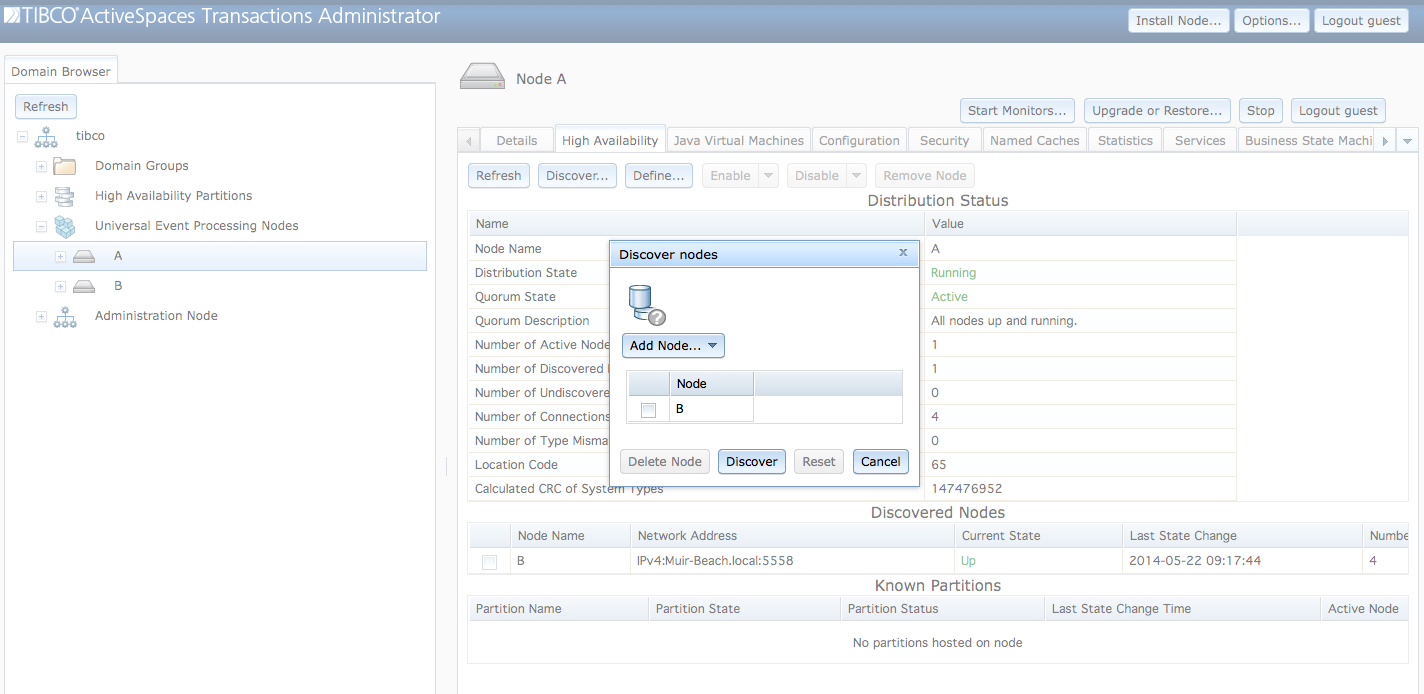Connectivity between nodes is established by either dynamic or static discovery. Each node in a cluster must agree on the dynamic and static discovery values for node discovery to work correctly.
dynamic discovery - all nodes in the cluster must have both dyanmic discovery and service discovery enabled and use the same discovery network address information. Dyanmic discovery is enabled in the distribution configuration using the
DynamicDiscovery.enabledconfiguration value (see Table 6.5, “Dynamic discovery configuration”). The service discovery values are set at node installation. See the section called “Installation” for details.static discovery - each node must define a
StaticDiscovery.RemoteNodeconfiguration block for all remote nodes to which it will be communicating. See Table 6.6, “Static discovery configuration” for details.
Connectivity between nodes can be verified on the
Discovered Nodes section of the High
Availability tab for a node (see Figure 6.1, “Distribution status”). For each remote node that has been
discovered this information is displayed:
Node Name - remote node name.
Network Address - network address used to connect to node.
Current State - current state of remote node.
Last State Change - the time of the last state change.
Number of Connections - current number of active TCP connections to the node.
Number of Queued PDUs - current number of protocol data units queued for this remote node when using asynchronous replication. This value is always 0 if synchronous replication is being used.
Discovered - how the node was discovered.
Location Code - internally generated location identifier for this node.
This information can also be displayed using:
administrator servicename=A display cluster type=remote
Operators can force distribution to attempt to discover
remote nodes using the Discover... button on the
High Availability tab as shown in Figure 6.3, “Discovering nodes”. Clicking on the
Discover button in the dialog attempts to establish
connectivity to the specified nodes.
Nodes can also be discovered using this command:
administrator servicename=A discover cluster nodes=B,C
Discovered nodes in the Down state can be
removed by selecting a node in the Discovered Nodes
section and clicking on the Remove Node
button. This is useful when connectivity has been lost to a remote node,
or the node has been permanently removed from the cluster.
Nodes can also be removed using this command:
administrator servicename=A removenode distribution remotenode=B
